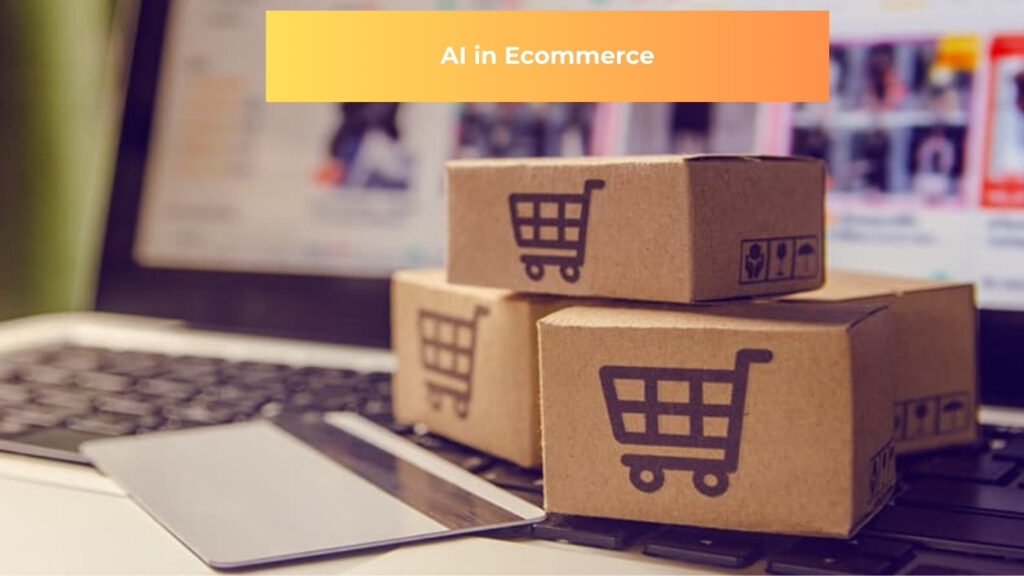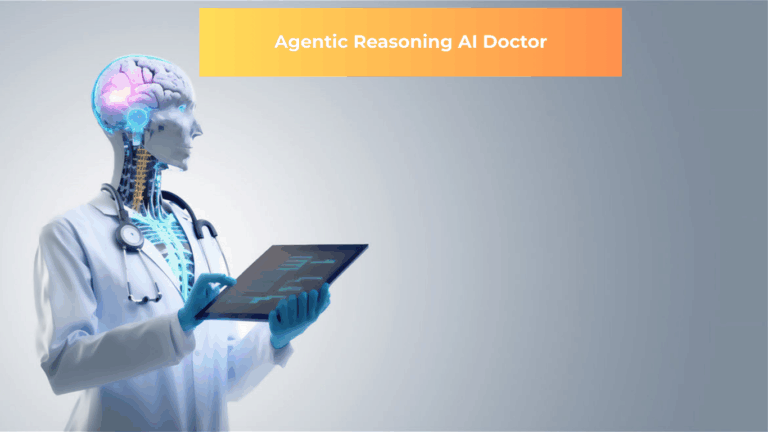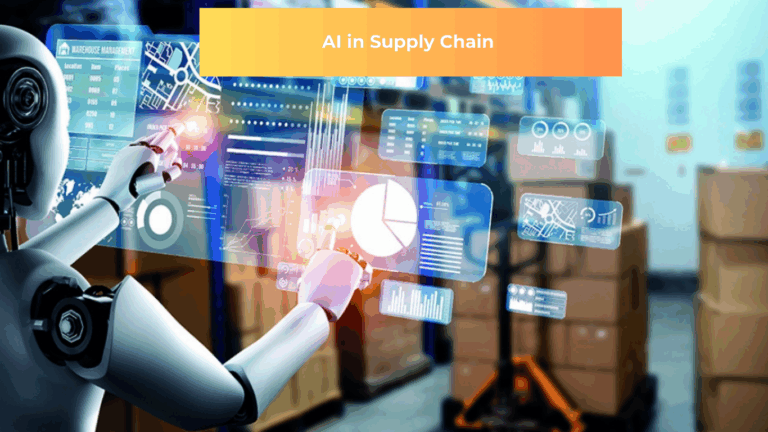Did you know that AI in ecommerce can boost conversion rates by up to 30%?
In the rapidly evolving world of online retail, artificial intelligence (AI) is transforming how businesses operate, engage customers, and drive growth.
From personalized shopping experiences to optimized supply chains, AI use cases in ecommerce are reshaping the global B2B market.
This article explores what AI in ecommerce is, how it works, its benefits, challenges, and how HBLAB’s expertise can help businesses leverage AI-driven ecommerce solutions to stay competitive.
The AI in eCommerce revolution empowers businesses to deliver personalized, scalable solutions that drive global competitiveness.
What is AI in Ecommerce?
AI in ecommerce refers to the application of artificial intelligence technologies to enhance online retail operations, customer experiences, and business efficiency.

It encompasses tools like machine learning, natural language processing (NLP), and computer vision to automate processes, personalize interactions, and optimize decision-making.
According to Grand View Research, the global AI in retail market was assessed at USD 11.61 billion in 2024 and is expected to reach USD 40.74 billion by 2030.
For example, generative AI in ecommerce creates dynamic product descriptions, while AI chatbots for ecommerce provide 24/7 customer support.
The AI in eCommerce ecosystem leverages machine learning and NLP to streamline operations and enhance customer engagement.
AI empowers businesses to analyze vast datasets, predict trends, and deliver tailored experiences, making it a cornerstone of modern ecommerce strategies.
👉 Explore HBLAB’s AI-driven ecommerce solutions to transform your online store!
How AI in Ecommerce is applied

Exploring AI in eCommerce reveals its transformative role in automating processes and boosting conversion rates.
Below are key AI use cases in ecommerce:
Personalization
AI in eCommerce analyzes customer data to deliver tailored recommendations. For instance, Amazon’s recommendation engine uses machine learning to suggest products, boosting sales by 35%.
Inventory Management
The power of AI in eCommerce shines in inventory management, ensuring optimal stock levels with minimal waste.
Algorithms analyze historical data and trends to prevent overstocking or shortages.
Customer Support
Leveraging AI in eCommerce, chatbots provide seamless, 24/7 support, enhancing customer satisfaction.
Tools like Shopify’s ShopBot reduce response times significantly.
Image Enhancement
How to use AI image enhancing in ecommerce photography involves tools like Adobe’s AI-driven Photoshop to improve product visuals, ensuring high-quality images that attract customers.
Pricing Optimization
AI adjusts prices dynamically based on market trends and competition. For example, Walmart uses AI to optimize pricing, increasing margin.
Search and Discovery
AI-powered search engines, like Algolia, enhance product discovery by understanding user intent, improving conversion rates.
HBLAB implements these AI use cases in ecommerce using frameworks like TensorFlow and custom algorithms, ensuring seamless integration.
👉 Contact HBLAB to implement AI in your ecommerce platform!
The Transformative Edge of AI in Ecommerce
Artificial Intelligence isn’t just a “tech upgrade” for online retail—it’s reshaping the shopping journey, from the way people find products to how businesses manage their back-end operations. Let’s break down how AI in ecommerce is creating measurable impact.
1. Smarter Shopping Journeys = Higher Conversions
Ever wondered how Netflix always knows what you want to watch next, or how Amazon seems to recommend just the right product? That same intelligence is driving ecommerce sales upward.
AI-powered product recommendation engines analyze browsing history, purchase behavior, and even micro-interactions like how long a shopper lingers on a product page.
According to McKinsey, personalization driven by AI can lift revenues by 10–15% on average, and Forrester reports that recommendation engines account for up to 30% of ecommerce site revenues.
➡️ Smart suggestions mean fewer abandoned carts and more completed purchases.
2. Cost Reduction Through Automation
Running an online shop can feel like juggling 100 tasks at once—stock updates, order fulfillment, customer queries, returns…the list goes on. AI steps in here as an invisible operations manager.
Inventory optimization powered by AI helps retailers reduce stock-outs and excess inventory. In fact, Capgemini’s research highlights that automating supply chain and inventory with AI can cut operational costs by 20–25%.
Beyond inventory, AI also streamlines dynamic pricing, predictive demand forecasting, and even customer service through chatbots, saving both time and dollars.
3. Always-Available, Human-Like Customer Support
Today’s shoppers expect instant answers—nobody wants to wait 48 hours for a reply to a product question. Enter AI-powered chatbots and virtual assistants.
Unlike traditional support, AI chatbots can handle thousands of conversations at once, in multiple languages, 24/7. According to Juniper Research, chatbots are expected to save retailers $11 billion annually by 2025, primarily through reduced customer service costs and faster resolution times.
➡️ Customers get quick resolutions, brands get loyal, happy shoppers. Win-win.
4. Scalability Without Scaling Costs
When a small online brand suddenly goes viral (think TikTok effect), human-driven operations may crumble under demand spikes. AI, however, thrives on scale.
Because AI systems are built to process massive amounts of data and traffic, growth doesn’t necessarily mean proportional increases in staffing or costs. Cloud-based AI platforms can dynamically handle everything from recommendation algorithms to personalized marketing campaigns, ensuring that customer experience doesn’t break when traffic surges.
5. Turning Data Into Actionable Intelligence
Every click, scroll, or abandoned cart tells a story. But raw data is useless without interpretation. This is where AI shines—transforming mountains of analytics into actionable insights.
AI-driven analytics can segment audiences, identify high-value customers, predict churn, and even suggest marketing campaigns tailored to tiny behavioral nuances. Salesforce reports that 84% of customers say the experience a brand provides is as important as its products—and AI gives retailers the power to curate that experience with data-driven precision.
➡️ Instead of drowning in dashboards, businesses can see exactly what drives loyalty and ROI.
Challenges and Risks of AI in Ecommerce
Despite its benefits, implementing AI in ecommerce comes with challenges:
- High Initial Costs: Developing AI solutions requires significant investment in technology and expertise.
- Data Privacy Concerns: AI relies on customer data, raising compliance issues with regulations like GDPR.
- Integration Complexity: Embedding AI into existing platforms can be technically challenging and time-consuming.
- Bias in Algorithms: Poorly trained AI models may produce biased recommendations, affecting customer trust.
Partnering with an experienced provider like HBLAB mitigates these AI in ecommerce challenges through robust processes and compliance expertise.
Case Studies: Success with AI in Ecommerce
Two recent, real-world case studies show how ecommerce leaders are using AI to drive measurable gains in conversion, AOV, and operational efficiency, with credible stats from their programs and industry sources to validate impact.
Sephora: AR try-on boosts engagement and sales
Sephora’s success with AI in eCommerce highlights how AR and personalization boost engagement and sales.
Sephora’s AI + AR “Virtual Artist” lets shoppers virtually try makeup, reducing uncertainty and driving faster decisions across web and app journeys, which increases engagement and conversion in beauty where fit and shade are critical.

Industry research on AR in retail reports substantial gains: products with 3D/AR content can see up to a 94% lift in conversion, and brands report fewer returns due to higher purchase confidence—a pattern consistent with Sephora’s expansion of AR try-ons across channels to deepen discovery and reduce friction before checkout.
Complementing AR, Sephora layers AI recommendations and conversational support, a stack that aligns with platform-wide findings that AI-assisted experiences during peak periods (e.g., Black Friday 2024) delivered double‑digit conversion uplifts, reinforcing the business case for AI-driven personalization and service in beauty ecommerce.
Walmart: AI forecasting trims inventory costs and improves availability
Walmart deploys AI models across demand forecasting and inventory orchestration, combining POS data, web traffic, seasonality, and external signals to optimize stock levels and reduce supply chain disruption, improving on-shelf availability online and in-store.

Documented outcomes from recent AI forecasting programs include 10–15% reductions in inventory costs and measurable gains in forecast accuracy, translating into better stock placement and fewer missed sales during demand spikes—critical for omnichannel retailers at scale.
These efforts build on a broader playbook (autonomous shelf scanning, AI service tools) that enhances end‑to‑end efficiency and shopper experience, matching observed market-wide trends where AI acceleration is tied to conversion and fulfillment KPIs.
Why these matter now
AI matters in ecommerce right now because it reliably lifts conversions and makes operations leaner, based on recent market data and retailer programs in 2024–2025.
AI-led experiences like AR try-on, dynamic recommendations, and conversational assistants are linked with double‑digit conversion gains during major shopping cycles, showing that these systems scale under peak traffic without breaking the customer journey.
On the back end, AI demand forecasting reduces inventory costs while improving availability, with recent reports citing about 10–15% cost reductions at scale—directly supporting gross margin and healthier cash flow.
How to replicate the wins
To replicate these wins, connect engagement from AR try-ons, recommendations, and chat to downstream metrics such as add‑to‑cart, AOV, and return rates, and run fast A/B tests to keep improvements compounding, especially in categories like beauty and fashion where fit and style uncertainty are high.
Then wire forecasting models into execution—automated replenishment, allocation, and substitutions—so the accuracy gains translate into fewer stockouts and lower carrying costs rather than sitting in a dashboard.
👉 Discover HBLAB’s AI expertise for your ecommerce success!
Role of Emerging Technologies in AI for Ecommerce
Emerging technologies are expanding what AI in ecommerce can do, by making experiences more visual, conversational, instantaneous, and autonomous, while cutting latency and operational overhead at scale.
Together, these capabilities improve conversions, reduce returns, and streamline operations across the full funnel—from content creation and search to support and fulfillment.
Generative AI
Modern generative models create on‑brand product images, lifestyle scenes, and first‑draft copy at scale, accelerating launches and A/B tests while reducing studio and copy costs. Retail teams increasingly use image generation for background swaps, scene composition, and ad variants, and use text generation for PDP copy, emails, and ads—always with human review for accuracy and brand tone. Industry trackers note rapid adoption of generative tools in retail content operations, with spending plans rising as brands tie usage to faster production cycles and higher testing velocity.
NLP and chatbots
Advances in large language models enable multilingual, human‑like chat that resolves pre‑purchase questions, sizing/fit doubts, and policy issues in seconds, which shortens the path to purchase and lifts conversion. Recent session‑level analyses report materially higher conversion when shoppers engage AI chat versus those who do not, and faster checkout completion due to instant, contextual answers and guided discovery. These assistants also deflect routine tickets, allowing human agents to focus on complex cases without sacrificing response time or CSAT.
Computer vision
Vision models power visual search, smart tagging, and AR try‑ons that reduce uncertainty for fashion, beauty, and home goods where look and fit drive returns. Research on AR/3D commerce shows notable conversion lift and lower return rates when shoppers can visualize true-to-scale products or virtually try shades and styles before buying, which aligns with category leaders’ adoption of try‑on and scene placement tools. Retailers pair vision with attribute extraction to improve search relevance and recommendation quality, reducing “dead ends” in browsing.
Edge AI
Running inference on devices and at the network edge reduces latency for recommendations, spam/fraud checks, and personalization, especially on mobile where milliseconds matter for conversion. Edge delivery of models enables real‑time ranking and content adaptation under peak traffic without round‑trip delays, keeping pages responsive and carts intact. This architecture also cuts cloud egress and improves data minimization by processing signals locally when feasible.
Agentic AI
Agentic systems chain tools and reasoning steps to autonomously handle tasks like merchandising, bidding, and catalog enrichment, and can coordinate actions across marketing, CRM, and inventory. In retail, agents can watch demand signals, spin up creative variants, launch micro‑tests, and shift budgets, then learn from outcomes to improve the next cycle—all with human guardrails. Forecasts and executive surveys show rapid movement from pilots to embedded AI workflows, reflecting confidence in agent-led optimization across the commerce stack.
HBLAB has an in-depth study on the importance of Agentic AI — Read more now.
When to Use AI in Ecommerce?

AI is ideal for ecommerce businesses in these scenarios:
Personalization needs
Use AI recommendation systems when product catalogs are large and sessions are short, so each visit surfaces highly relevant items in real time. Retailers report double‑digit conversion lifts from AI‑led journeys, and AR/3D-enhanced products can see notably higher conversion and lower returns by reducing uncertainty before purchase, which is especially impactful in beauty, fashion, and home. Technically, this means training models on clickstream, PDP dwell, add‑to‑cart, and purchase sequences, then ranking products per user with session‑level re‑scoring for context (e.g., price sensitivity, size availability).
High customer support demand
Deploy AI chat when repetitive questions clog queues, response SLAs slip, or support spans multiple languages and time zones. Current program data shows shoppers who engage AI chat tend to spend more per session, while organizations cite faster resolution and lower cost-to-serve from 24/7 assistants handling routine tickets and hand‑off to agents for complex issues. Under the hood, combine intent classification, retrieval for policy/FAQ grounding, and guardrailed generation, with analytics tied to CSAT, deflection, AHT, and conversion from chat to checkout.
Inventory challenges
Adopt AI demand forecasting when stockouts and overstock drive lost sales or high working capital, especially across many SKUs and volatile seasons. Recent write‑ups describe 10–15% inventory cost reductions and higher on‑shelf availability from multi‑signal models that blend POS, web traffic, seasonality, weather, promo, and external trends into store‑SKU forecasts connected to replenishment. Technically, implement hierarchical time‑series models with exogenous variables and feedback loops from real sell‑through to continuously re‑calibrate.
Competitive pricing
Use dynamic pricing when markets move quickly, competitors repricing often, or when demand elasticity varies by segment, time, and channel. AI models evaluate price elasticity and competitor moves to optimize for revenue or margin, triggering real‑time price updates while honoring constraints (MAP, inventory, promo windows). Integrations should stream competitor feeds, factor shipping thresholds and bundles, and run controlled experiments to quantify lift and guard against race‑to‑the‑bottom effects.
Visual content needs
Adopt generative AI and vision when product photography and copy production bottleneck launches, variants, or testing velocity. Retail teams use AI to create lifestyle scenes, background swaps, and first‑draft PDP copy and ad variations—always paired with human QA for accuracy and brand tone—accelerating time‑to‑publish and enabling more A/B tests per week. In parallel, vision models power visual search and attribute tagging so shoppers find “look‑alike” items faster, which correlates with higher product discovery and conversion.
HBLAB’s tailored AI-driven ecommerce solutions ensure businesses maximize these opportunities.
👉 Contact HBLAB for a free AI in ecommerce consultation!
HBLAB – Your Partner in AI-Driven Ecommerce Solutions
HBLAB is a trusted partner in leveraging AI in ecommerce to drive innovation and growth. With over a decade of experience, we deliver tailored, scalable solutions for online retailers worldwide.
Why Choose HBLAB?
- 630+ Professionals: Our team, with strong English proficiency, ensures seamless collaboration.
- AI Expertise Since 2017: Prestigious partnerships for AI enable cutting-edge solutions.
- CMMI Level 3 Certification: Our processes guarantee quality and efficiency.
- Cost Efficiency: Our solutions are 30% more cost-effective than local rates.
- Flexible Engagement Models: Offshore, onsite, or dedicated teams align with your needs.
From AI chatbots for ecommerce to generative AI in ecommerce, HBLAB empowers businesses to enhance customer experiences and optimize operations. Our rigorous processes ensure data security and compliance, making us a reliable partner for your ecommerce journey.
👉 Contact HBLAB for expert AI-driven ecommerce solutions today!
Conclusion
AI in ecommerce is transforming online retail by personalizing experiences, optimizing operations, and driving scalability. From AI chatbots for ecommerce to generative AI in ecommerce, these technologies empower businesses to stay competitive.
Despite challenges like data privacy, the benefits of AI-driven ecommerce solutions are undeniable.
Partner with HBLAB to harness AI in ecommerce and achieve your business goals.
FAQs on AI in Ecommerce
How is AI being used in ecommerce?
AI in ecommerce powers personalization, inventory management, and customer support. Tools like AI chatbots for ecommerce enhance user experiences, while predictive analytics optimize stock levels.
Which AI is best for ecommerce?
TensorFlow and PyTorch are top choices for AI-driven ecommerce solutions, offering robust tools for personalization and inventory optimization. The best choice depends on project needs.
Can AI build an ecommerce website?
AI can assist in building ecommerce websites by automating design and content creation. However, human oversight is needed for customization and strategy.
What is generative AI in ecommerce?
Generative AI in ecommerce creates dynamic content like product descriptions and visuals, enhancing customer engagement and reducing manual effort.
How to use AI image enhancing in ecommerce photography?
Use tools like Adobe’s AI-driven Photoshop to enhance product images, ensuring high-quality visuals that attract customers. HBLAB can integrate these solutions seamlessly.
What are the benefits of AI chatbots for ecommerce?
AI chatbots for ecommerce provide 24/7 support, reduce response times, and improve customer satisfaction, boosting retention and sales.
How does AI improve ecommerce scalability?
AI automates processes and handles growing data, enabling ecommerce platforms to scale efficiently without proportional cost increases.
What are common AI use cases in ecommerce?
AI use cases in ecommerce include personalization, pricing optimization, inventory management, and visual search, all driving efficiency and sales.
CONTACT US FOR A FREE CONSULTATION!
Read more:
– Agentic AI In-Depth Report 2025: The Most Comprehensive Business Blueprint
– Perplexity AI for Enterprises: Supercharge Your Search Strategy In 4 Steps
– Agentic Reasoning AI Doctor: 5 Extraordinary Innovations Redefining Modern Medicine




